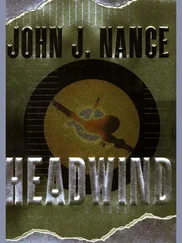“Five hundred feet to go, Marty. No decision height.”
“Roger.”
“Coming up on two miles to the runway, on speed, one half dot above the glide slope.”
“Roger.”
“Four hundred above and one mile,” Ryan was saying.
“Gear down,” Marty commanded, as Ryan’s hand moved the lever downward, starting the hydraulic sequence that lowered the huge main gear trucks and the nose gear into place.
What had been eating Marty Mitchell finally coalesced, like a blindingly bright flash of crystalline insight. He’d been dutifully following a single idea down a narrow tube and failing to consider or even see any other possibility, but just because a runway was formally declared closed and full of snow didn’t mean it had ceased to exist! What they needed was runway length and some means of slowing down and the absence of a dropoff at the far end.
Jesus! he’d thought, that’s Runway 36 right!
“GEAR UP!” Marty commanded.
“What?” Ryan had asked.
“Going around. Gear Up! Tell the tower.”
For perhaps sixty seconds he held his breath that the change from the shallow descent to a climb hadn’t disturbed the wreckage on the right wing, but he made the pull up very, very smoothly, bringing the power in extremely slowly arresting the descent and gingerly beginning to climb as he held the exact same speed. There was more than enough energy stored in the 230 knot velocity to trade for altitude before the engines came up to full power, but keeping it smooth and the angle of attack constant was absolutely imperative.
He heard Ryan’s expression of befuddlement to the controller but there wasn’t time to worry about it.
“Ryan, tell them we need vectors to the south and then a Category 3 ILS to Runway 36 right.”
“Captain, that runway is closed!”
“Yes, because it’s full of snow, and what do we need? A way of slowing down on the runway, and that’s exactly what a few feet or more of snow will give us! And it’s sixteen thousand feet long with a flat plain beyond.”
“We can’t land on an unplowed runway… can we?”
“We can and we will! At the same speed.”
“But there’s a twenty-knot crosswind on that runway!”
“This aircraft can take it. Tell the tower!”
The obviously stressed voice of the controller acknowledged the request and repeated the same information that the runway was closed and the ILS turned off.
Marty pressed the PA button on the interphone panel.
Folks, this is the captain. We went around because we think there’s a better and far safer way to get us on the ground. We’re going to use a much longer north-south runway. I still need you in brace position, your seatbelts tightly fastened, and to follow the instructions of your flight attendants.”
He pressed the #1 VHF radio button again and hit the transmit button himself.
“Approach, whoever I’m talking to… there’s no time for debate. I need the unplowed snow to slow me down and I need the length, and I need that ILS turned on right this second.”
“Ah, Twelve, roger, we’re doing it. It takes the ILS time to come on line.”
“Approach, it will take about five minutes I figure, for us to come around for a stabilized approach. Give me maximum on the runway lights, approach lights, the rabbit, and the VASI’s, all of it.”
“They may be snow covered, sir.”
“I know that. Please do it. All equipment clear?”
A brief pause marked the controller’s relay of the question which resulted in a quick response.
“Roger, Twelve, the tower advises the runway is clear of everything but snow. Turn right now, one eight zero, climb to and maintain eight thousand.”
“We’ll stay at seven thousand, Approach.”
“Roger… seven thousand. I’ll turn you for the intercept in about five miles.”
Ryan was looking at him with a feral expression and Marty glanced to his right long enough to acknowledge it.
“What, Ryan?”
“We’re burning fuel now from the left main, Marty. Our balance is going to be affected quickly.”
“We need five minutes. Do we have five minutes?”
“God, I hope so. You really think this will work?”
“Same answer. God, I hope so! But, yes, it’s what we both were missing. Who gives a rat’s ass what runway is formally open? We have emergency authority to land anywhere.”
“Can the gear take it? This is big landing gear! Maybe we should land gear up?”
“No. If the gear can’t handle it, we’ll still be decelerating on a very long runway with no dropoff at the end. Dammit, why didn’t I think of this before?”
“Regal Twelve, turn right now to a heading of three one zero, maintain seven thousand feet to intercept the localizer, and you’re of course cleared for the Cat 3 approach to Runway 36 R as requested. Be advised our ILS monitors are not indicating a stable signal yet.”
“We have it up here, and we’ve got GPS backup. We’re good.”
“The emergency equipment will be relocating from Runway Seven.”
“Roger.”
Marty carefully banked the 757 fifteen degrees to the right, holding the turn until on a 45 degree intercept for the final approach course. He could see the localizer coming alive and beginning to move across the screen, the artificially created horizontal situation indicator showing them rapidly approaching the centerline of the runway as projected out many miles by the instrument landing system transmitter. He began another bank to the right, and rolled out on centerline.
“Intercepting localizer.”
“How do you want to do this, Marty? As a monitored approach?”
“No time. I’ll hand fly. Read the radio altimeter all the way down and help me find the runway. We’ll lower the gear in three miles. Give me landing lights at two hundred feet.”
“Speed is two thirty, on the nose,” Ryan announced. “Flaps are still where we left them.”
“Got it. Bringing the combiner back down,” he said as he pulled the heads up display back into position in front of his eyes.
With both pilots used to approach speeds being somewhere between eighty to a hundred knots slower, the rapid approach of the normal descent point was startling, as if they were flying a high speed jet fighter instead of a lumbering transport.
“Give me the gear, now!” Marty called, realizing he was about to overrun the descent point. “Gear down, before landing checklist.”
Ryan responded immediately, the gear handle snapping down and the sound of the huge main landing gear and nose gear rumbling into place, followed by three green lights on the panel.
“Down and three green,”
“Before landing checklist,” Marty ordered, and Ryan began rapidly going through the sequence.
“Checklist complete, one thousand feet above, speed two thirty.”
“Roger.”
“You’re a bit above the glide slope!”
‘I know it. I’m going to stay in a right crab against this right crosswind until just over the runway, then I’ll kick it out and align us.” Marty’s hand pulled the two throttles back a bit more, his eyes darting between the attitude indicator, HSI, and airspeed as he gently lowered the nose to increase the rate of descent.
“Still one dot high on the glide slope,” Ryan called out.
“I know it.”
“Seven hundred above, two miles to go.”
“Gear and flaps rechecked down?” Marty asked.
“Gear down and locked, flaps just beyond ten degrees.”
Marty was working diligently to keep the speed on target at 230 while checking to make sure the deck angle of the 757 was at least two degrees nose up. The main gear had to touch first, but any flaring of the aircraft, and raising of the nose just over the runway, with such excessive speed would simply fly them back into the air. Yet the descent rate was just over twelve hundred feet per minute which would mean a very hard landing that the gear could probably take, but it would be a crunching arrival at best, and if too hard, the Beech fuselage would undoubtedly be broken loose.
Читать дальше












